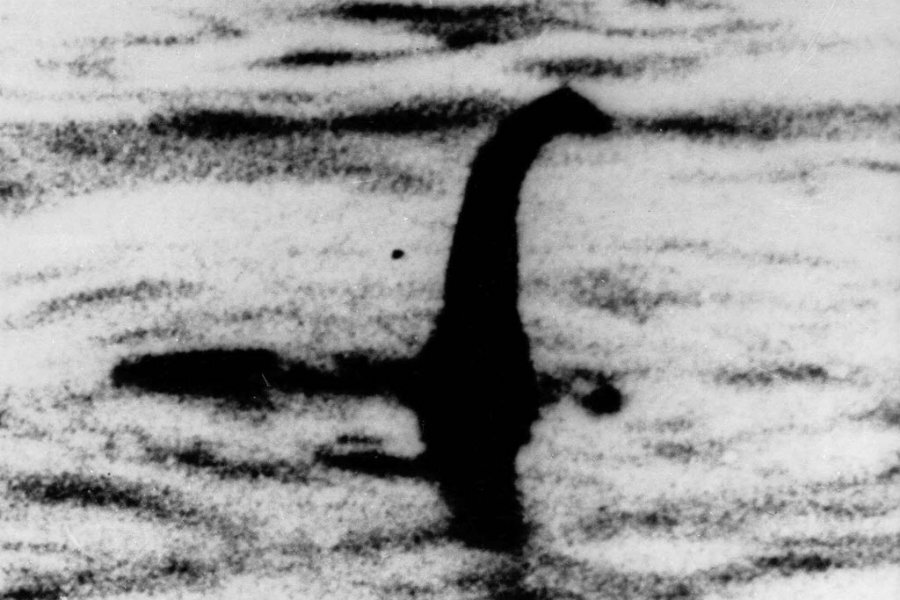Loch Ness Monster photo: A case of plesiosaur pareidolia?
Loading...
Seeing faces in clouds, the moon, or your morning toast? Don’t worry, you’re not the only one.
What you’re experiencing is called pareidolia, a psychological phenomenon whereby the brain perceives a pattern or meaning where it doesn’t exist. Think the Virgin Mary on a grilled cheese sandwich, the famous man in the moon – or, in the case of today’s Google Doodle, a plesiosaur in a Scottish loch.
One of the best-known cases of mass pareidolia, the famous Loch Ness Monster photo taken by British surgeon and colonel Robert Wilson in 1934 was long ago revealed as a hoax: Nothing more than, as Vox put it, “a toy submarine with a plastic head stuck on it.”
Still, it’s easy to see how “The Surgeon’s Photo,” as it is known, gave birth to the modern Loch Ness legend. The picture seems to clearly show the head, neck, and partly submerged body of a dinosaur.
Or does it?
Pareidolia comes from the Greek terms “para,” meaning alongside or beyond, and “eidolon,” meaning image or form. It refers to how the mind ascribes significance to a random image or sound.
According to American astronomer and author Carl Sagan, the phenomenon evolved as a survival tool that allowed humans to recognize faces from a distance or in the dark. The instinct was vital to identifying friend or foe, but Mr. Sagan noted that it could cause people to misinterpret patterns.
Pareidolia may occur as early as infancy. In one study, researchers showed 10- and 12-month-old babies an image of four blobs and an outline, both right side up and upside down, while playing a sound. They found that the infants tended to look at the bottom blob – what the researchers referred to as the “pareidolic mouth area” – longer when the image was upright, suggesting an early recognition of the source of sound in the human face.
The tendency can also be directed: When taking the Rorschach Test, once thought to be of great import in clinical psychology, patients relied on pareidolia to describe images to doctors from a series of inkblots on paper.
Expectations also influence what people see when they experience pareidolia, according to Sophie Scott, a professor of neuroscience at the University College London.
“Being able to see Jesus's face in toast is telling you more about what's happening with your expectations, and how you're interpreting the world based on your expectations, rather than anything that's necessarily in the toast," Dr. Scott told the BBC.
And once you’ve seen a face in your breakfast – or a long-necked behemoth in a photo of a lake – it’s surprisingly difficult to ignore the image.
“That's one of the things about illusions, they have this remarkable tendency to formulate in your mind, and it's very difficult to unthink them," Bruce Hood, author of “The Self Illusion: How the Social Brain Creates Identity,” told the British network.
To celebrate the 81st anniversary of “The Surgeon’s Photo,” Google set out on a quest for Nessie, taking boat and camera to take pictures on the Scottish loch.
One image captured something in the distance.
“We were surprised by this sighting too,” a Google spokesperson told The Telegraph, which took note of the photo. “Is it a log, a bird or... the monster?!”
You decide.








